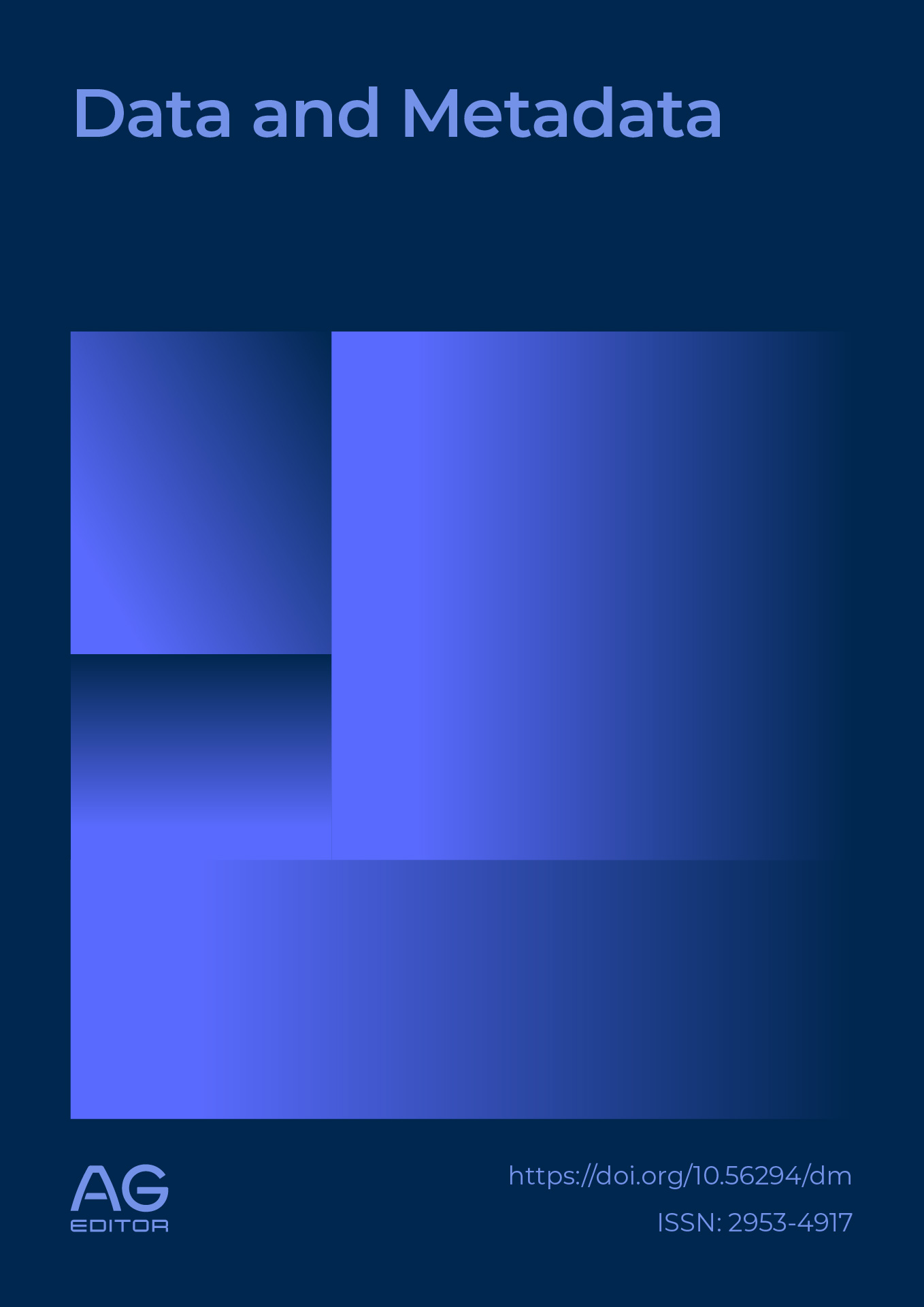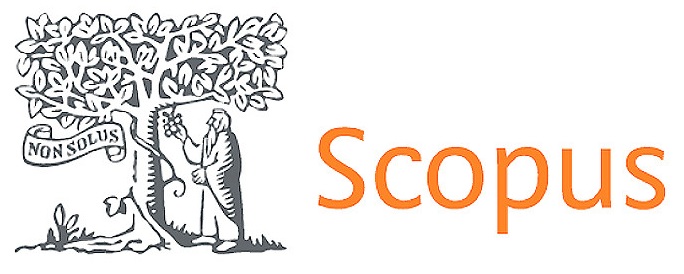Android-Based Digital Learning Media: Improving Interactivity in Analysis and Design of Systems Course
DOI:
https://doi.org/10.56294/dm2025523Keywords:
Android-based learning media, Multimedia Development Life Cycle (MDLC), educational technology, validation, interactive learningAbstract
This study aims to develop an Android-based digital learning media to enhance student engagement and understanding in the Analysis and System Design course at Universitas Negeri Padang (UNP). The development of this media was carried out using the Multimedia Development Life Cycle (MDLC) method, which includes the stages of concept, design, material collection, assembly, testing, and distribution. Validation was conducted by experts in pedagogy, design, and technology to ensure the quality of the media, with the validation results showing an average Aiken V value of 0.84, categorized as valid. Additionally, Black Box Testing was performed to ensure that the application's features, such as navigation, content delivery, and task submission, functioned properly. The results of the study indicate that this Android-based learning media is effective in supporting learning, providing flexible access, and increasing student interaction and engagement with the material in the Analysis and System Design course. This media has proven to be a useful tool for improving learning outcomes by presenting multimedia content that can be accessed through Android devices. Future research is expected to develop the compatibility of this media on other platforms and assess its impact on student learning performance.
References
1. Wahyono T. Management of Quality Human Resources to Improve the Community of Life in Klambir Lima Kebun Village. Int J Res Rev. 2022 May 11;9(5):86–94. DOI: https://doi.org/10.52403/ijrr.20220515
2. Hayati M, Aiuby H. The Role of Education in Productivity of Human Resources and Increasing Job Opportunities. IJHESS [Internet]. 2023 Aug 2 [cited 2024 Nov 7];3(1). Available from: http://ijhess.com/index.php/ijhess/article/view/468 DOI: https://doi.org/10.55227/ijhess.v3i1.468
3. Riyanda AR, Jalinus N, Ahyanuardi FY, Sagala MK, Rinaldi D, Adi NH. Enhancing Higher-Order Thinking Skills through Case-Project-Based Learning in Algorithms and Data Structures Courses. Journal of Hunan University Natural Sciences. 2024;51(6). DOI: https://doi.org/10.55463/issn.1674-2974.51.6.16
4. Al-Sheeb BA, Abdulwahed MS, Hamouda AM. Impact of first-year seminar on student engagement, awareness, and general attitudes toward higher education. JARHE. 2018 Feb 5;10(1):15–30. DOI: https://doi.org/10.1108/JARHE-01-2017-0006
5. Koretsky MD, Magana AJ. Using Technology to Enhance Learning and Engagement in Engineering. Advances in Engineering Education. 2019;
6. Lastri L, Kartikowati S, Sumarno S. Analysis of Factors that Influence Student Learning Achievement. Journal of Educational Sciences. 2020 Jul 24;4(3):679. DOI: https://doi.org/10.31258/jes.4.3.p.679-693
7. Gadzali SS. Impact of Technology in Improving the Quality of Education and Human Resource Development. IMEIJ. 2023 Oct 29;4(2):1337–48. DOI: https://doi.org/10.54373/imeij.v4i2.362
8. Devega AT, Ambiyar A, Panyahuti P, Adi NH, Riyanda AR. The effectiveness of learning media on the outcome of computer and basic network of vocational students. JPTK. 2022 May 31;5(2):47–52. DOI: https://doi.org/10.24036/jptk.v5i2.23123
9. Askar WP. Alikasi Geogebra Classic 5 Sebagai Media Pembelajaran Pada Mata Pelajaran Matematika SMA. Jurnal Pendidikan Teknologi Informasi dan Vokasional. 2022;4(1):28–38.
10. Lubis LH, Febriani B, Yana RF, Azhar A, Darajat M. The Use of Learning Media and its Effect on Improving the Quality of Student Learning Outcomes. IJESSM. 2023 Jun 6;3(2):7–14. DOI: https://doi.org/10.52121/ijessm.v3i2.148
11. Nasution AKP. Utilization Of Educational Media In Language Learning. JLLLT. 2021 Dec 5;1(1):20–9. DOI: https://doi.org/10.37249/jlllt.v1i1.315
12. Adi NH, Devega AT, Riyanda AR. The Design of Learning Media to Support Online Learning in Computer Network Courses. In Atlantis Press; 2021. p. 23–8.
13. Umamah C, Diraya I, Andi HJ. The Effectiveness and Practicality of Web-based Learning Media with Wix Platform in Vocational High Schools. JPF. 2023 Jan 31;11(1):115–26. DOI: https://doi.org/10.26618/jpf.v11i1.9720
14. Azhari A, Frinaldi A. Pengaruh E-Learning Terhadap Efektivitas Perkuliahan Mahasiswa Fakultas Ilmu Sosial Universitas Negeri Padang. EDUNESIA. 2020 Jan 9;1(1):14–23. DOI: https://doi.org/10.24036/edunesia.v1i1.4
15. Nyeneng IDP, Riyanda AR, Herlina K. Feasibility Test for Android-Based Mobile Learning on High School Content. Jurnal Pembelajaran Fisika. 8(2):151–8. DOI: https://doi.org/10.23960/jpf.v8.n2.202003
16. Cahyani D, Yunita F, Ubaidillah M. Application of Inquiry Collaborative Constructivism Model in Biology Learning Respiratory System to Improve Students’ Critical Thinking Skills. JPS Universitas Muhammadiyah Semarang. 2022 May 17;10(1):28. DOI: https://doi.org/10.26714/jps.10.1.2022.28-35
17. Syahrial S, Asrial A, Kurniawan DA, Perdana R, Pratama RA. Implementing Inquiry Based Ethno-Constructivism learning module to Improve Students’ Critical Thinking Skills and Attitudes Towards Cultural Values. EJER [Internet]. 2021 Sep 30 [cited 2024 Nov 7];2021(95). Available from: https://ejer.com.tr/ DOI: https://doi.org/10.14689/ejer.2021.95.7
18. Dewi DK, Ardhana W, Irtadji, Chusniyah T, Sulianti A. Inquiry-Based Learning Implementation to Improve Critical Thinking of Prospective Teachers. IJIET. 2021;11(12):638–45. DOI: https://doi.org/10.18178/ijiet.2021.11.12.1575
19. Lower-Hoppe LM, Brgoch S, Chen YJ, Sutherland S. Inquiry-Based Learning in Action: Theory and Practice in Higher Education. In: Keengwe J, editor. Advances in Educational Technologies and Instructional Design [Internet]. IGI Global; 2021 [cited 2024 Nov 7]. p. 34–59. Available from: http://services.igi-global.com/resolvedoi/resolve.aspx?doi=10.4018/978-1-7998-4360-3.ch003 DOI: https://doi.org/10.4018/978-1-7998-4360-3.ch003
20. Randa G, Taali T. Pengembangan Modul Pembelajaran Berbasis WEB Pada Mata Kuliah PLC dan Pneumatic. JPTE. 2020 Nov 25;1(1):118–21. DOI: https://doi.org/10.24036/jpte.v1i1.51
21. Tasrif E, Mubai A, Huda A, Rukun K. Pemanfaatan media pembelajaran berbasis augmented reality menggunakan aplikasi Ar_Jarkom pada mata kuliah instalasi jaringan komputer. JKP. 2020 Dec 30;8(3):217. DOI: https://doi.org/10.29210/153400
22. Adi NH, Lubis AL, Basriadi A, Dewi IP, Wahdi YW. Augmented Reality Learning Media Application In Computer Networking Courses. SinkrOn. 2024 Jul 10;8(3):1641–50. DOI: https://doi.org/10.33395/sinkron.v8i3.13707
23. Garrison DR. E-Learning in the 21st Century: A Framework for Research and Practice [Internet]. 0 ed. Routledge; 2003 [cited 2024 Nov 7]. Available from: https://www.taylorfrancis.com/books/9781134574537 DOI: https://doi.org/10.4324/9780203166093
24. Co AGE, Magno KGC, Jesus FSD. Barriers to Effective Integration of Interactive Technology Learning Tools in Science Instruction. OALib. 2021;08(08):1–19. DOI: https://doi.org/10.4236/oalib.1107724
25. Ariyani SM, Nurdyansyah. The Effectiveness of Technology-Based Interactive Learning Media to Improve Students’ Cognitive Skill at Islamic Elementary School. J Ilm PGMI. 2024 Jun 30;10(1):1–15. DOI: https://doi.org/10.19109/jip.v10i1.22575
26. Ariyani F, Putrawan GE, Riyanda AR, Idris AsR, Misliani L, Perdana R. Technology and minority language: an Android-based dictionary development for the Lampung language maintenance in Indonesia. Tapuya: Latin American Science, Technology and Society. 2022 Dec 31;5(1):2015088. DOI: https://doi.org/10.1080/25729861.2021.2015088
27. Akash A, Chithra S, Vasuki P, Shanmughapriya T, Muthu M G N. Towards Privacy for Android Mobile Applications. In: 2022 International Conference on Futuristic Technologies (INCOFT) [Internet]. Belgaum, India: IEEE; 2022 [cited 2024 Nov 7]. p. 1–8. Available from: https://ieeexplore.ieee.org/document/10094512/
28. Qiu J, Yang X, Wu H, Zhou Y, Li J, Ma J. LibCapsule: Complete Confinement of Third-Party Libraries in Android Applications. IEEE Trans Dependable and Secure Comput. 2022 Sep 1;19(5):2873–89. DOI: https://doi.org/10.1109/TDSC.2021.3075817
29. Zhao K. Demystifying Privacy and Security Issues in Potentially Harmful Mobile Applications. In: 2023 IEEE 43rd International Conference on Distributed Computing Systems (ICDCS) [Internet]. Hong Kong, Hong Kong: IEEE; 2023 [cited 2024 Nov 7]. p. 963–4. Available from: https://ieeexplore.ieee.org/document/10272516/
30. Mostafa MM. Three decades of interactive learning environments: a retrospective bibliometric network analysis. Interactive Learning Environments. 2023 Dec 15;31(10):6968–87. DOI: https://doi.org/10.1080/10494820.2022.2057548
31. Bedenlier S, Bond M, Buntins K, Zawacki-Richter O, Kerres M. Facilitating student engagement through educational technology in higher education: A systematic review in the field of arts and humanities. AJET. 2020 Jan 26;126–50. DOI: https://doi.org/10.14742/ajet.5477
32. Mudinillah A, Kuswandi D, Erwin E, Sugiarni S, Winarno W, Annajmi A, et al. Optimizing Project-Based Learning in Developing 21st Century Skills: A Future Education Perspective. QAJ. 2024 May 9;4(2):86–101. DOI: https://doi.org/10.48161/qaj.v4n2a352
33. Marta R, Riyanda AR, Samala AD, Dewi IP, Adi NH. Innovative Learning Strategies: Project-Based Learning Model for Excelling in Visual Programming. TEM Journal. 2024;13(1). DOI: https://doi.org/10.18421/TEM131-61
34. Ranuharja F, Ambiyar A, Verawrdina U, Riyanda AR, Mirshad E, Saari EMB. Pengembangan Model Pembelajaran Project Based Learning Pada Matakuliah Praktikum Algoritma Pemograman: Desain Model Pembelajaran BerAKHLAK. Jurnal Pendidikan Teknologi Informasi dan Vokasional. 5((2)):37–55.
35. Hamdani SA, Prima EC, Agustin RR, Feranie S, Sugiana A. Development of Android-Based Interactive Multimedia to Enhance Critical Thinking Skills in Learning Matters. Journal of Science Learning. 2022;5(1):103–14. DOI: https://doi.org/10.17509/jsl.v5i1.33998
36. Sumaryana Y, Hikmatyar M. Aplikasi Pembelajaran Siswa Sekolah Dasar Menggunakan Metode Multimedia Development Life Cycle (Mdlc). TeIKa. 2020 Oct 30;10(2):117–24. DOI: https://doi.org/10.36342/teika.v10i2.2381
37. Maulana A, Kusdinar AB, Sunarto AA. Penerapan Multimedia Development Life Cycle dalam Pengembangan Media Visualisasi Pembelajaran Interaktif. Jutisi J Tek Sis Info. 2021 Jan 27;9(3):25. DOI: https://doi.org/10.35889/jutisi.v9i3.539
38. Pratama B, Zulhendra, Hadi A, Mursyida L. Development of Network Infrastructure Monitoring System at Vocational High School Using MikroTik and Telegram Integration. J Hypermedia Technol Enhanc Learn. 2024 Mar 4;2(3):188–201. DOI: https://doi.org/10.58536/j-hytel.v2i3.133
39. Aiken LR. Three Coefficients for Analyzing the Reliability and Validity of Ratings. Educational and Psychological Measurement. 1985 Mar;45(1):131–42. DOI: https://doi.org/10.1177/0013164485451012
40. Nielsen J. Usability engineering. Morgan Kaufmann; 1994. DOI: https://doi.org/10.1016/B978-0-08-052029-2.50009-7
41. Mayer RE. Incorporating motivation into multimedia learning. Learning and Instruction. 2014 Feb;29:171–3. DOI: https://doi.org/10.1016/j.learninstruc.2013.04.003
42. Damayanti L, Suana W, Riyanda AR. Pengembangan media pembelajaran interaktif berbasis augmeneted reality pengenalan perangkat keras komputer. IKRA-ITH INFORMATIKA: Jurnal Komputer Dan Informatika. 2022;6(1):10–9. DOI: https://doi.org/10.29210/177400
43. Adzan NK, Pamungkas B, Juwita D, Riyanda AR. Pengembangan Media Pembelajaran Tari Bedana Berbasis Android. IKRA-ITH HUMANIORA: Jurnal Sosial Dan Humaniora. 2021;5(1):1–10.
44. Adi NH, Veza O, Simatupang W, Irfan D, Muskhir M, Riyanda AR, et al. Development of Android-Based Interactive Learning Media on Listening, Imitating, and Reciting Materials for PAUD Students.
45. Azizah AL, Destini F, Hariyanto H. Development of Android-Based Interactive Multimedia in E-Learning. edu. 2024 Jun 28;5(2):1189–203. DOI: https://doi.org/10.51276/edu.v5i2.913
46. Rahmadani K, Masamah M. Pemanfaatan Media Pembelajaran Berbasis Android Pada Anak Usia Dini. Jurnal Pendidikan Teknologi Informasi dan Vokasional. 2023;(Vol 5, No 1 (2023): Jurnal Pendidikan Teknologi Informasi dan Vokasional):102–8.
47. Kurnia UI, Kurniawansah A. Perancangan Aplikasi Bahasa Inggris pada Smartphone Berbasis Android. Jurnal Pendidikan Teknologi Informasi dan Vokasional. 2023;(Vol 5, No 1 (2023): Jurnal Pendidikan Teknologi Informasi dan Vokasional):51–67.
48. Shaputra AD, Satibi A, Prasetiyo H. Media Pembelajaran Berbasis Android Mari Belajar Pengolahan Hasil Perikanan “MAPSIN.” Jurnal Pendidikan Teknologi Informasi dan Vokasional. 2024;(Vol 6, No 1 (2024): Jurnal Pendidikan Teknologi Informasi dan Vokasional):114–26.
49. Andri, Somawati. Application of Android-based Learning Media Applications for Primary Education. Jatilima. 2024 Mar 22;6(01):57–71. DOI: https://doi.org/10.54209/jatilima.v6i02.389
50. Ibáñez MB, Delgado-Kloos C. Augmented reality for STEM learning: A systematic review. Computers & Education. 2018 Aug;123:109–23. DOI: https://doi.org/10.1016/j.compedu.2018.05.002
Downloads
Published
Issue
Section
License
Copyright (c) 2025 Titi Sriwahyuni, Ambiyar, Elfi Tasrif, Afif Rahman Riyanda, Hafizul Fahri Hanafi, Yolanda Idha Fitri, Fitri Yanti (Author)

This work is licensed under a Creative Commons Attribution 4.0 International License.
The article is distributed under the Creative Commons Attribution 4.0 License. Unless otherwise stated, associated published material is distributed under the same licence.




